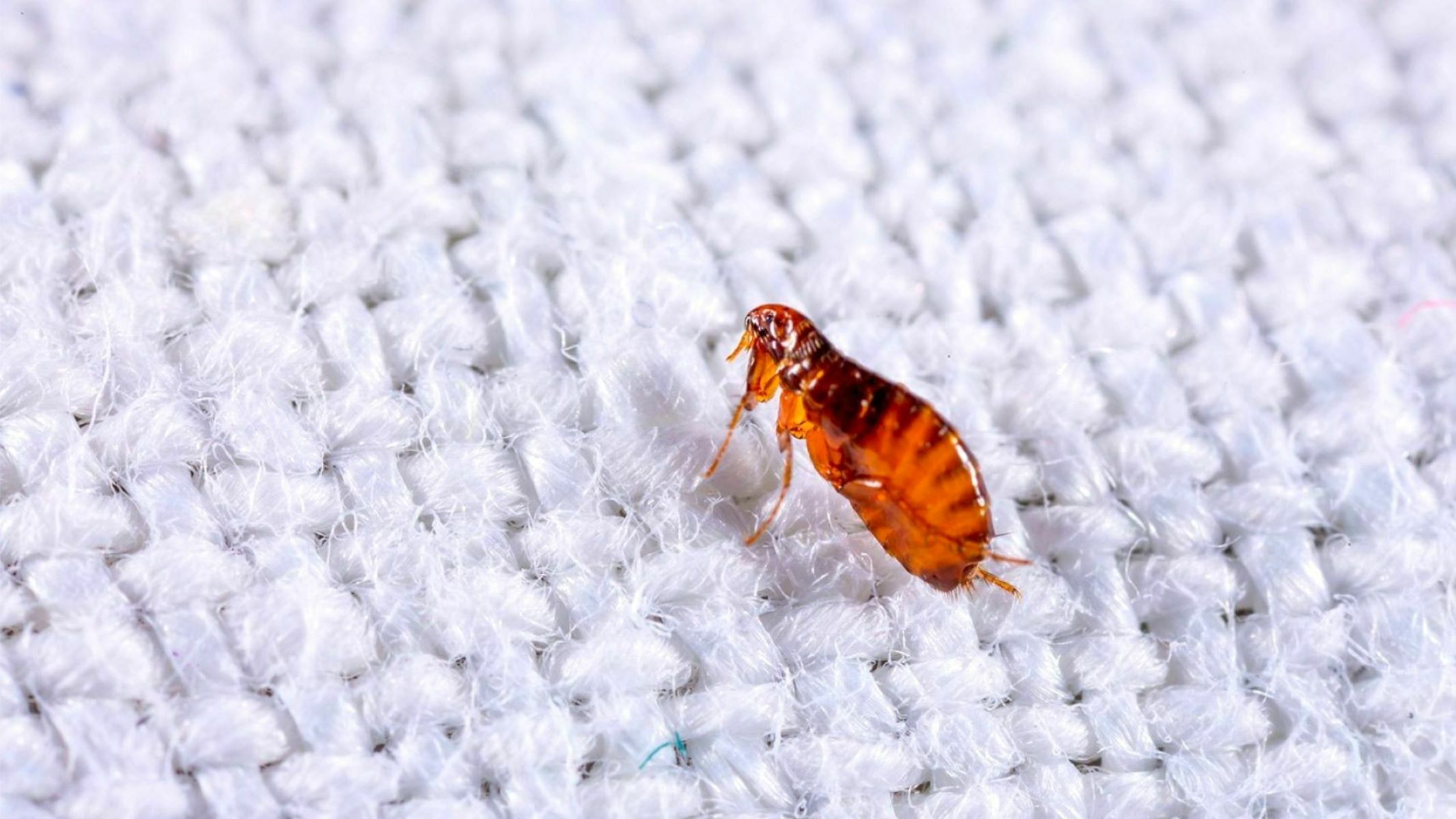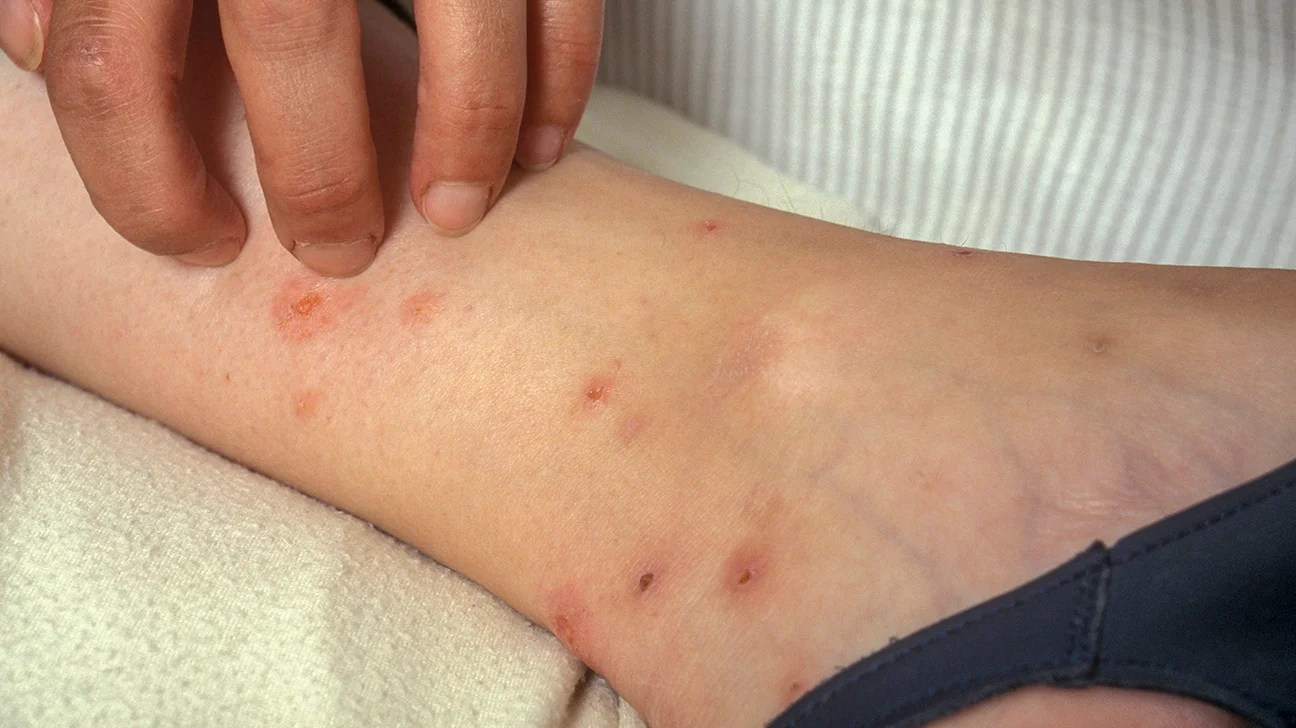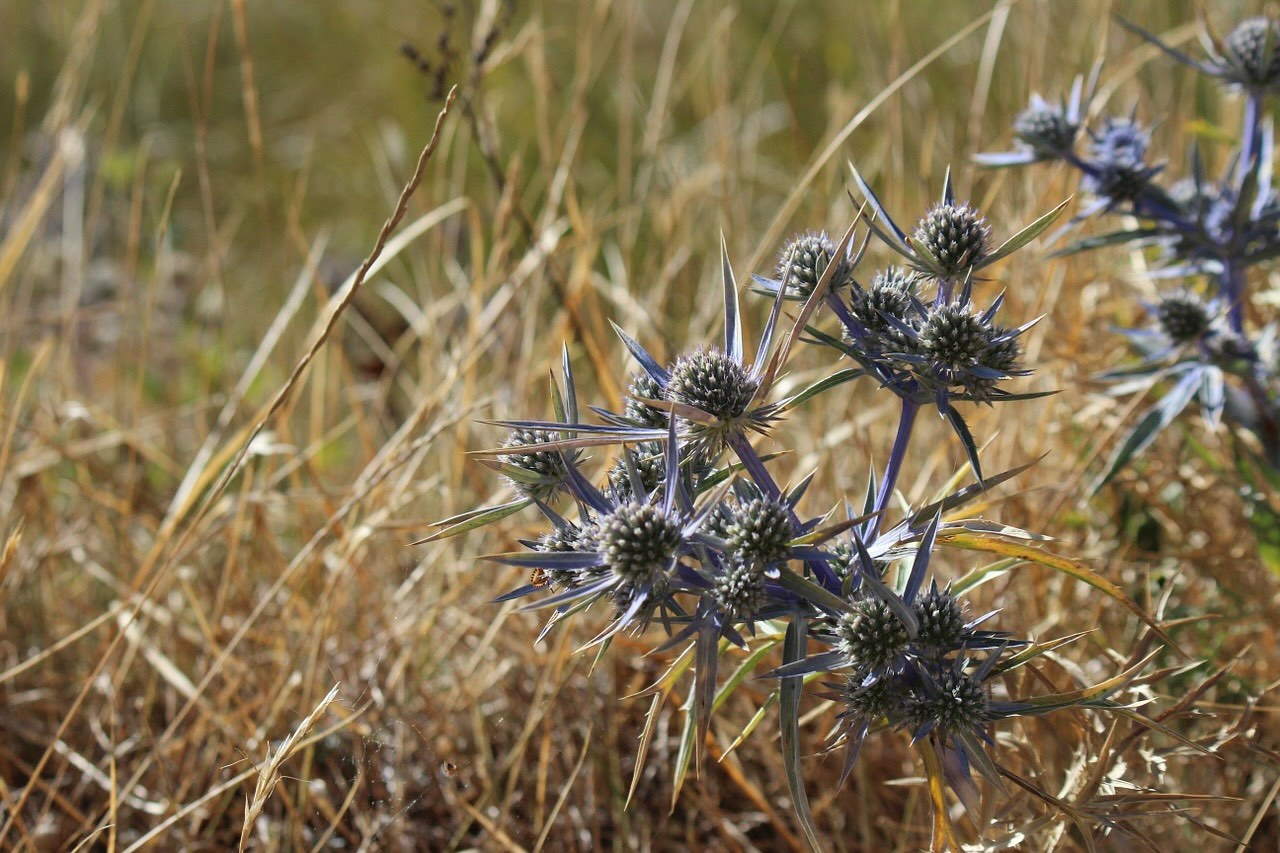Home>Gardening & Outdoor>Landscaping Ideas>How To Get Rid Of Grass Fleas


Landscaping Ideas
How To Get Rid Of Grass Fleas
Published: January 24, 2024
Learn effective landscaping ideas to eliminate grass fleas and keep your yard pest-free. Discover expert tips and techniques for a flea-free outdoor space.
(Many of the links in this article redirect to a specific reviewed product. Your purchase of these products through affiliate links helps to generate commission for Storables.com, at no extra cost. Learn more)
Introduction
Welcome to the world of landscaping, where lush green lawns and vibrant gardens provide a serene escape from the hustle and bustle of everyday life. However, this picturesque setting can be marred by the presence of grass fleas, also known as chiggers or harvest mites. These tiny pests can turn a peaceful outdoor retreat into a source of discomfort and frustration. But fear not, as we delve into the realm of landscaping and pest control, we’ll explore the ins and outs of grass fleas and how to effectively manage and eliminate them from your outdoor haven.
Whether you’re a seasoned gardener or a novice enthusiast, understanding the behavior and characteristics of grass fleas is crucial in maintaining a healthy and enjoyable outdoor space. From identification to prevention and elimination, we’ll equip you with the knowledge and strategies to reclaim your lawn and garden from these pesky intruders. So, grab your gardening gloves and join us on this journey to banish grass fleas and restore the tranquility of your outdoor oasis.
Key Takeaways:
- Grass fleas, though tiny, can cause discomfort and irritation. Regular maintenance, natural remedies, and preventive measures can help eliminate and deter these pests, creating a peaceful outdoor environment.
- Identifying grass fleas and understanding their behavior is crucial. Using essential oils, nematodes, and diatomaceous earth can provide natural and eco-friendly solutions for managing grass flea infestations.
Read more: How To Get Rid Of Grass Fleas In The House
Understanding Grass Fleas
Before delving into eradication methods, it’s essential to grasp the nature of the adversary at hand. Grass fleas, scientifically known as Trombiculidae, are not actually fleas but rather the larvae of mites. These minuscule pests measure only about 1/150th of an inch, making them nearly invisible to the naked eye. Despite their diminutive size, their impact can be significant, causing discomfort and irritation to both humans and animals.
Grass fleas thrive in warm and humid environments, typically making their presence known during the spring and summer months. They are commonly found in grassy areas, gardens, and wooded regions, where they lurk in the vegetation, eagerly awaiting a passing host to latch onto. Once attached, they inject enzymes into the skin, causing red, itchy welts that can persist for several days.
These pests are not only a nuisance but also potential carriers of diseases, making their presence a cause for concern. Understanding their habits and preferred habitats is crucial in devising effective strategies to combat their intrusion and prevent future infestations. By familiarizing ourselves with the behavior and lifecycle of grass fleas, we can better equip ourselves to tackle the issue head-on and restore our outdoor spaces to their former glory.
Identifying Grass Fleas
Spotting the presence of grass fleas is no easy task, given their minuscule size. However, there are telltale signs that can help identify their presence and distinguish them from other pests. One of the most evident indicators is the aftermath of their feeding, which often manifests as red, itchy welts on the skin. These welts are typically accompanied by a lingering discomfort, serving as a clear signal of a potential grass flea encounter.
When inspecting outdoor areas, particularly grassy and vegetated regions, keep an eye out for clusters of tiny, bright red or orange larvae. These larvae, measuring a mere fraction of an inch, are the juvenile form of grass fleas and are often found congregating in shaded, humid areas. Additionally, if you or your pets have been spending time in grassy or wooded areas and subsequently experience unexplained itching or discomfort, it’s advisable to inspect for grass flea activity.
It’s also important to differentiate between grass fleas and other common pests, such as mosquitoes, as their bites can produce similar symptoms. While mosquitoes are more active during dawn and dusk, grass fleas are prevalent during the day, particularly in warm and humid conditions. By familiarizing yourself with the distinct characteristics and behaviors of grass fleas, you can accurately identify their presence and take appropriate measures to address the issue.
Being able to recognize the signs of grass flea activity is the first step in effectively managing and eliminating these pests from your outdoor environment. By honing your observational skills and knowing what to look for, you can swiftly identify and address any potential infestations, ensuring a comfortable and enjoyable outdoor experience for you, your family, and your pets.
Preventing Grass Fleas
Proactively safeguarding your outdoor spaces from grass flea infestations is key to maintaining a tranquil and enjoyable environment. Implementing preventive measures not only minimizes the risk of encountering these pesky pests but also contributes to the overall health and vitality of your lawn and garden.
One effective strategy for preventing grass fleas is to maintain a well-groomed landscape. Regularly mowing the lawn and trimming vegetation helps reduce the humidity and shaded areas that grass fleas favor, thereby creating a less hospitable environment for their proliferation. Additionally, removing excess thatch and debris from the lawn eliminates potential hiding spots for grass fleas and disrupts their breeding grounds.
Strategic landscaping practices, such as creating barriers between wooded areas and recreational spaces, can also serve as a deterrent to grass fleas. By incorporating gravel or mulch buffers and maintaining a clear distinction between grassy areas and dense vegetation, you can minimize the likelihood of grass flea migration into frequented outdoor zones.
Furthermore, promoting biodiversity and ecological balance in your garden can contribute to natural pest control. Introducing plants that repel pests, such as marigolds, chrysanthemums, and lavender, can help deter grass fleas and other unwanted insects. Additionally, attracting beneficial predators, such as ladybugs and birds, can aid in keeping grass flea populations in check.
When spending time outdoors, especially in grassy or wooded areas, taking proactive measures to protect yourself and your pets is essential. Wearing long sleeves, pants, and insect-repellent clothing can serve as a physical barrier against grass fleas. Applying insect repellent containing DEET or picaridin can further fortify your defense against these tiny pests.
By integrating these preventive strategies into your landscaping and outdoor activities, you can create an inhospitable environment for grass fleas while fostering a thriving and harmonious outdoor space. Through proactive measures and a holistic approach to pest management, you can enjoy your lawn and garden with peace of mind, free from the nuisance of grass fleas.
To get rid of grass fleas, regularly mow your lawn, keep it well-watered, and remove any excess thatch or debris. You can also use natural or chemical insecticides specifically designed to target fleas.
Getting Rid of Grass Fleas
When faced with a grass flea infestation, swift and effective action is essential to reclaiming your outdoor sanctuary. Whether you’re dealing with a minor inconvenience or a full-blown invasion, implementing targeted methods to eliminate grass fleas is paramount in restoring the comfort and serenity of your outdoor space.
One of the most direct approaches to eradicating grass fleas is through the application of insecticides specifically formulated to target these pests. Selecting a pesticide labeled for mite control and following the manufacturer’s instructions for application can help reduce grass flea populations and prevent their resurgence.
In cases where grass fleas have infiltrated indoor spaces, thorough cleaning and vacuuming can aid in removing larvae and preventing their spread. Pay particular attention to areas where pets frequent, as grass fleas often hitch a ride indoors on furry companions. Washing pet bedding and grooming pets regularly can also help mitigate the risk of grass flea infestations.
Another effective method for reducing grass flea populations is the application of diatomaceous earth, a natural and non-toxic substance that dehydrates and kills insects upon contact. Sprinkling diatomaceous earth in grassy and shaded areas can help combat grass fleas while minimizing the impact on beneficial insects and the environment.
Utilizing a combination of physical and chemical control methods can enhance the efficacy of grass flea eradication efforts. Employing a high-powered vacuum to remove larvae and eggs from outdoor furniture, cushions, and shaded areas can complement the application of insecticides, significantly reducing grass flea populations.
It’s important to note that persistence and consistency are key when combating grass fleas. Regular monitoring of outdoor spaces, prompt removal of debris and thatch, and targeted treatment of grassy and shaded areas can help prevent grass flea resurgence and maintain a pest-free environment.
By implementing a comprehensive approach to grass flea control and remaining vigilant in your pest management efforts, you can effectively eliminate these pesky intruders and restore the tranquility of your outdoor haven.
Read more: How To Get Rid Of Fleas On Carpet
Natural Remedies for Grass Fleas
For those seeking alternative methods to manage grass flea infestations, natural remedies offer a gentle yet effective approach to pest control. Embracing eco-friendly and non-toxic solutions not only addresses the issue of grass fleas but also contributes to the overall well-being of your outdoor environment.
One natural remedy for deterring grass fleas involves the use of essential oils known for their insect-repelling properties. Oils such as cedarwood, eucalyptus, and lavender can be diluted and applied to outdoor furniture, pet bedding, and shaded areas to discourage grass flea activity. These aromatic oils not only repel grass fleas but also add a pleasant fragrance to your outdoor spaces.
Introducing nematodes, microscopic roundworms that feed on insect larvae, into the soil can serve as a biological control method for grass fleas. These beneficial organisms target and consume grass flea larvae, effectively reducing their populations without posing harm to plants, animals, or the environment.
Creating a homemade insect-repelling spray using natural ingredients such as apple cider vinegar, citrus peels, and herbs can provide a non-toxic means of deterring grass fleas. Spraying this solution in grassy and shaded areas can help repel grass fleas while minimizing the impact on beneficial insects and the ecosystem.
Utilizing food-grade diatomaceous earth, a naturally occurring sedimentary rock powder, can aid in controlling grass flea populations without the use of harsh chemicals. This powdery substance can be applied to grassy and shaded areas, where it acts as a desiccant, dehydrating and ultimately eliminating grass fleas upon contact.
Furthermore, promoting a diverse and balanced ecosystem in your garden can contribute to natural pest control. Encouraging the presence of beneficial insects, such as ladybugs and lacewings, and creating habitats for insectivorous birds can help keep grass flea populations in check while fostering a thriving and harmonious outdoor environment.
By incorporating these natural remedies into your pest management practices, you can effectively address grass flea infestations while maintaining a sustainable and eco-friendly approach to landscaping and outdoor living. Embracing natural solutions not only mitigates the impact of grass fleas but also enriches the biodiversity and vitality of your outdoor spaces.
Conclusion
As we conclude our exploration of grass fleas and their impact on outdoor environments, it’s evident that these tiny pests can pose a significant challenge to the tranquility and comfort of our lawns and gardens. However, armed with knowledge and effective strategies, we can mitigate the presence of grass fleas and reclaim our outdoor sanctuaries.
Understanding the behavior and lifecycle of grass fleas is fundamental in devising preventive measures and targeted eradication methods. By familiarizing ourselves with the signs of grass flea activity and implementing proactive landscaping practices, we can create an inhospitable environment for these pests while fostering the overall health and vitality of our outdoor spaces.
When faced with grass flea infestations, a multifaceted approach to pest control is essential. Combining chemical and natural remedies, such as insecticides, diatomaceous earth, essential oils, and biological controls, can effectively reduce grass flea populations while minimizing the impact on the environment and beneficial organisms.
Furthermore, maintaining a harmonious and diverse ecosystem in our gardens, promoting biodiversity, and creating habitats for beneficial insects and birds can contribute to natural pest control, keeping grass flea populations in check while enhancing the ecological balance of our outdoor havens.
As we strive to coexist with nature and enjoy the serenity of our outdoor spaces, it’s essential to approach grass flea management with a holistic and sustainable mindset. By integrating preventive measures, targeted eradication methods, and natural remedies, we can create a harmonious and pest-free environment for ourselves, our families, and our beloved pets.
So, as you embark on your landscaping endeavors, remember that with knowledge, vigilance, and a touch of creativity, you can transform your outdoor oasis into a haven free from the nuisance of grass fleas, allowing you to savor the beauty and tranquility of your natural surroundings.
Frequently Asked Questions about How To Get Rid Of Grass Fleas
Was this page helpful?
At Storables.com, we guarantee accurate and reliable information. Our content, validated by Expert Board Contributors, is crafted following stringent Editorial Policies. We're committed to providing you with well-researched, expert-backed insights for all your informational needs.















0 thoughts on “How To Get Rid Of Grass Fleas”